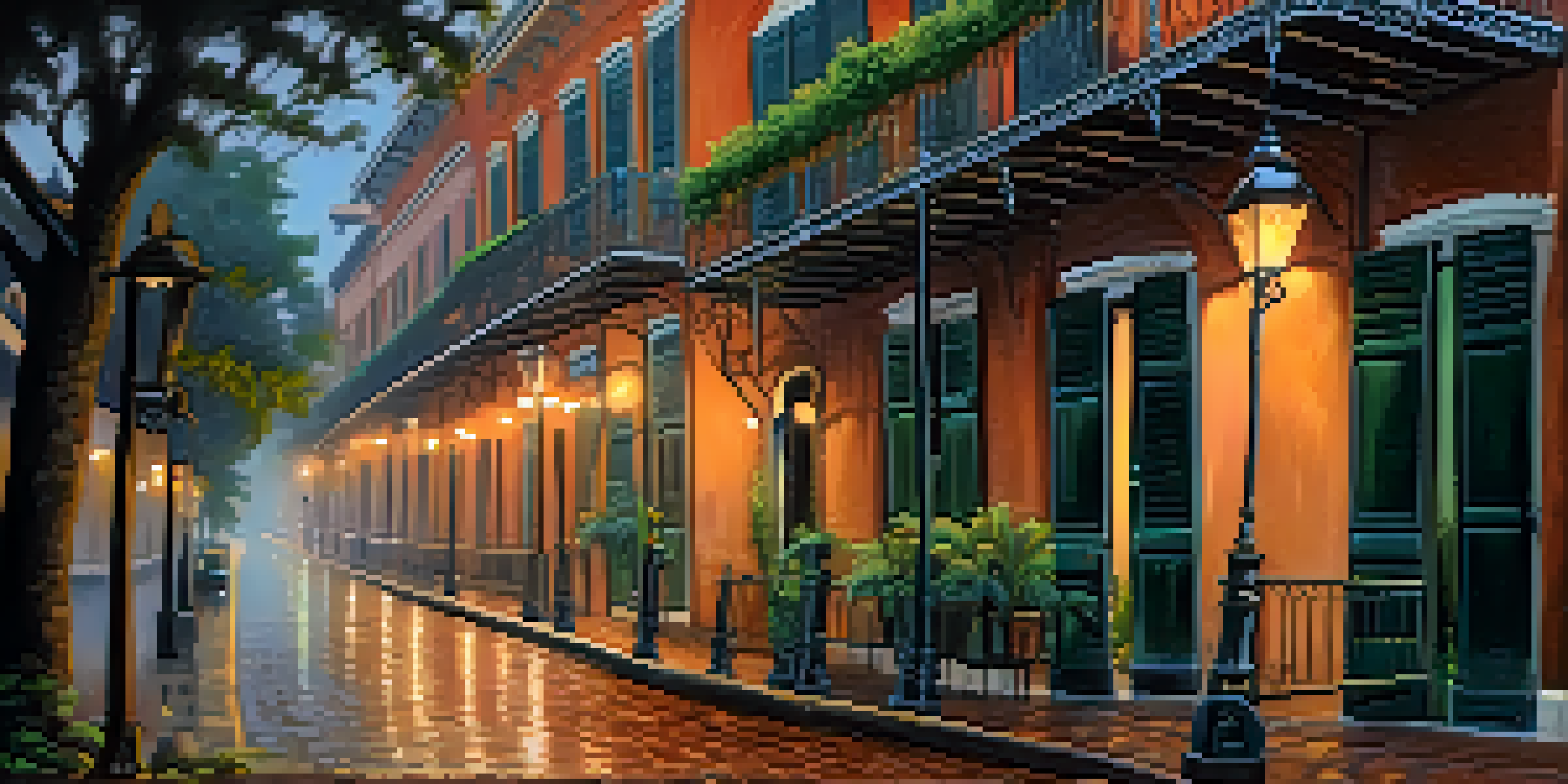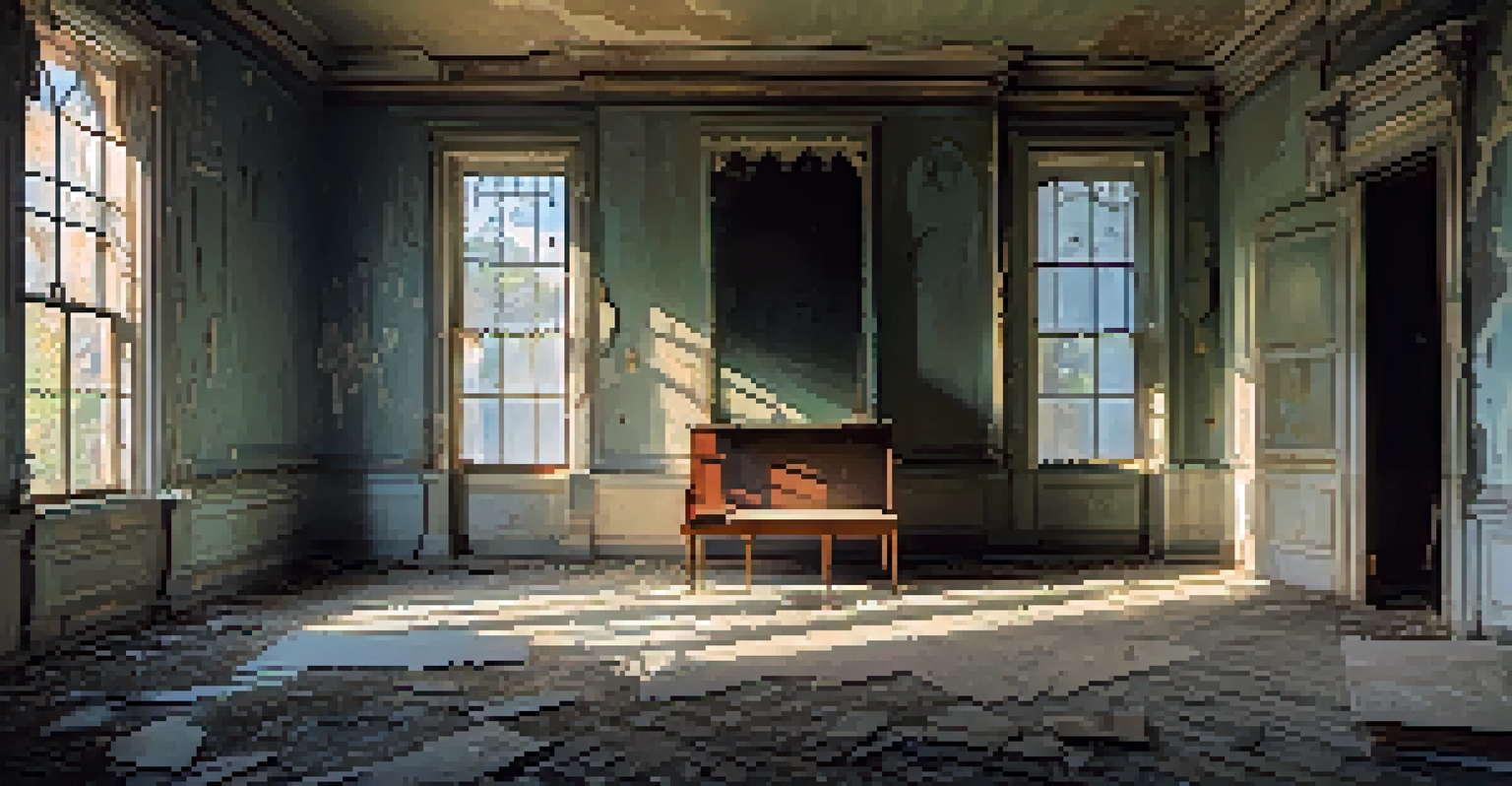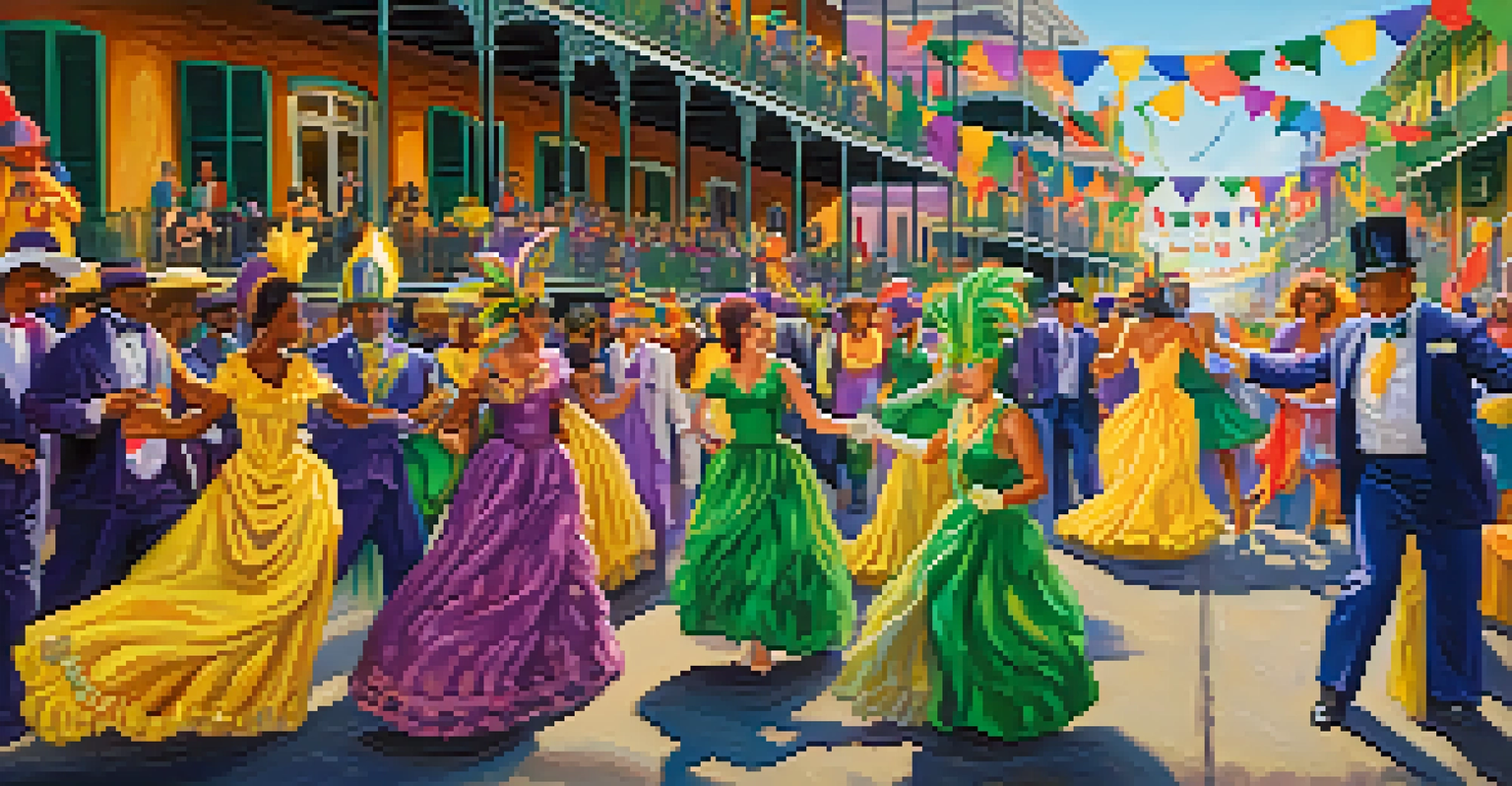New Orleans and Southern Gothic: A Literary Examination

Understanding the Southern Gothic Literary Tradition
Southern Gothic is a subgenre that blends elements of Gothic fiction with the unique cultural and social landscapes of the American South. It typically features dark themes, grotesque characters, and explores complex social issues like race and class. This literary tradition provides a rich backdrop for examining the South's turbulent history and its impact on modern society.
The past is never dead. It's not even past.
The Southern Gothic often reveals the decay and moral ambiguity that can lurk beneath the surface of genteel Southern life. Think of it as a peeling paint job on a charming old house—underneath the beauty lies a story of neglect and abandonment. This genre challenges readers to confront uncomfortable truths about the South, making it a powerful tool for social commentary.
In New Orleans, the Southern Gothic tradition finds a particularly vibrant expression. The city's unique blend of cultures, history, and mystique amplifies the genre's themes, setting the stage for tales that are as captivating as they are haunting.
The Influence of New Orleans' History on Southern Gothic
New Orleans has a rich and often tumultuous history that significantly influences its representation in Southern Gothic literature. From the impacts of colonization and slavery to the vibrant yet dark underbelly of the city's nightlife, these historical elements are woven into many narratives. This backdrop creates a fertile ground for exploring themes of isolation, decay, and the supernatural.

The city's iconic architecture, with its crumbling mansions and wrought-iron balconies, adds to the Gothic atmosphere found in literature. These physical spaces often serve as symbols of the characters' inner struggles, echoing the weight of history on their lives. The haunting beauty of such locations enhances the sense of mystery and intrigue, drawing readers deeper into the narrative.
Southern Gothic's Dark Themes
Southern Gothic literature explores complex social issues like race, class, and moral decay, often reflecting the turbulent history of the American South.
Moreover, New Orleans' blend of cultures and religions, particularly voodoo, introduces an element of magic and mystique that is often present in Southern Gothic tales. This unique cultural tapestry invites authors to explore the intersection of the real and the supernatural, fueling the genre's eerie allure.
Key Themes in Southern Gothic Literature
Common themes in Southern Gothic literature include the exploration of racial tension, family dysfunction, and the effects of isolation. These themes often reflect the historical realities of the South, showcasing how deeply rooted issues continue to shape individuals and communities. For instance, the legacy of slavery and segregation looms large, often serving as a backdrop for character motivations and conflicts.
You can't be a writer if you don't have a sense of the grotesque.
Another prevalent theme is the idea of decay, both physical and moral. Characters often grapple with their past, confronting the ghosts of their ancestry and the weight of societal expectations. This decay can manifest in the landscape as well, symbolizing the decline of traditional Southern values and the struggle for identity in a changing world.
Additionally, the Southern Gothic often delves into the supernatural, blending reality with the fantastical. This can create a sense of unease, as characters confront not only their personal demons but also the cultural ghosts that haunt their surroundings. These themes resonate deeply in the context of New Orleans, where the past is ever-present and the line between the living and the dead is often blurred.
Iconic Southern Gothic Authors and Their Works
Several authors have made significant contributions to the Southern Gothic genre, with some of the most notable being William Faulkner, Flannery O'Connor, and Tennessee Williams. Faulkner's works, such as 'As I Lay Dying,' explore the complexities of Southern identity, family, and tragedy, often set against the backdrop of Mississippi. His intricate narratives invite readers to peel back layers of meaning, much like uncovering the history of a city like New Orleans.
Flannery O'Connor's short stories, including 'A Good Man is Hard to Find,' often feature grotesque characters and moral dilemmas that highlight the absurdities of life. Her keen insight into human nature and the South's cultural idiosyncrasies resonate strongly within the Southern Gothic tradition. O'Connor's works encourage readers to examine their own beliefs and biases, making her a pivotal figure in this literary movement.
New Orleans as a Gothic Setting
The unique blend of cultures and haunting beauty of New Orleans enhances the Southern Gothic genre, making the city a vibrant backdrop for tales of mystery and intrigue.
Tennessee Williams, known for plays like 'A Streetcar Named Desire,' captures the essence of Southern Gothic through themes of desire, illusion, and the fragility of human relationships. His characters are often trapped by societal expectations and personal demons, mirroring the struggles of many New Orleanians. Together, these authors provide a rich tapestry of narratives that illuminate the complexities of life in the South.
New Orleans: A Living Southern Gothic Setting
New Orleans itself often feels like a character in Southern Gothic literature, with its vibrant culture, rich history, and haunting beauty. The city's eerie charm captivates both locals and visitors, making it an ideal backdrop for stories steeped in mystery and intrigue. From the French Quarter's lively streets to the somber atmosphere of the Garden District, New Orleans embodies the duality of life and death found in Southern Gothic narratives.
The city's annual celebrations, such as Mardi Gras, highlight the juxtaposition between festivity and the underlying darkness of human nature. These events often serve as a microcosm of Southern Gothic themes, showcasing the struggle between joy and despair. Just as characters in Southern Gothic literature confront their inner turmoil, so too does New Orleans grapple with its complex identity.
Moreover, the city's rich traditions, including voodoo and jazz, contribute to its Southern Gothic allure. These elements provide a sense of mysticism and cultural depth, further enhancing the stories that emerge from this unique locale. In this way, New Orleans not only inspires Southern Gothic literature but also embodies its essence.
Modern Interpretations of Southern Gothic in New Orleans
Contemporary authors continue to explore Southern Gothic themes within the context of New Orleans, breathing new life into the genre. Works such as 'The Little Friend' by Donna Tartt and 'The Ballad of the Sad Café' by Carson McCullers reflect the enduring impact of Southern Gothic while incorporating modern sensibilities. These narratives often highlight issues such as urban decay, social inequality, and the search for identity in a rapidly changing world.
In recent years, Southern Gothic elements have also made their way into popular culture, including film and television. Shows like 'True Detective' and 'American Horror Story: Coven' have captured the eerie charm of New Orleans while delving into the city's darker aspects. These adaptations showcase how Southern Gothic themes remain relevant and relatable, resonating with modern audiences.
Legacy and Modern Adaptations
The Southern Gothic tradition continues to evolve through contemporary literature and popular culture, addressing modern issues while preserving the genre's core themes.
Furthermore, contemporary authors are embracing diverse voices and perspectives within the Southern Gothic framework. By exploring different cultural backgrounds and experiences, these writers are enriching the genre and expanding its boundaries. This evolution reflects the ongoing complexity of New Orleans as a city, where stories of struggle, resilience, and mystery continue to thrive.
The Lasting Legacy of Southern Gothic in New Orleans
The legacy of Southern Gothic literature in New Orleans is profound, influencing not only literature but also the city's cultural identity. As stories unfold against the backdrop of this vibrant city, they invite readers to confront their own perceptions of the South. The genre's ability to tackle uncomfortable truths ensures its continued relevance, making it a vital part of New Orleans' narrative.
Moreover, Southern Gothic literature serves as a means of preserving the history and experiences of the South, offering insights into the lives of those who came before us. By examining the complex relationships between characters and their environments, these stories contribute to a deeper understanding of the region's culture and history. This exploration fosters empathy and connection among readers, bridging gaps between different experiences.

As New Orleans continues to evolve, the Southern Gothic tradition will likely adapt and flourish, reflecting the city's changing landscape. The stories that emerge from this dynamic setting will undoubtedly captivate future generations, ensuring that the legacy of Southern Gothic literature remains alive and well in the heart of the South.